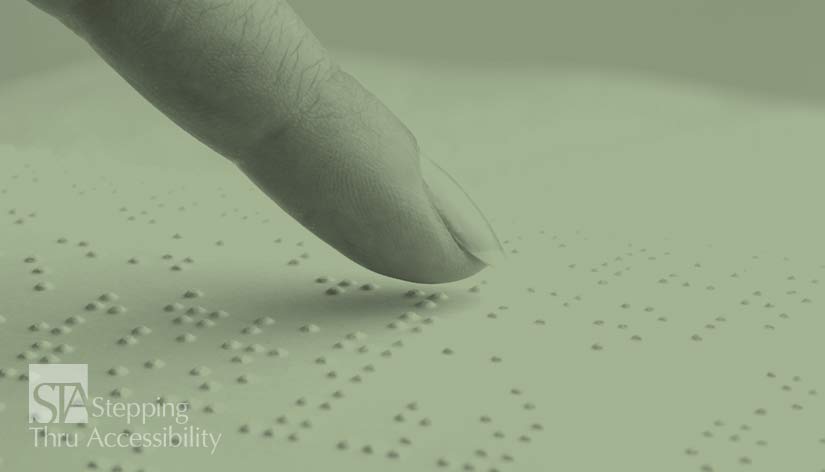Blog
Return to Blog »
Janis Kent, Architect, CASp © July, 2022 Braille was originally developed by Charles Barbier, who was interested in alternate writing forms. Some thought it was a code he created that could be used by the army at night. Later on in a book he published, he stated that it was his opinion that since it took so long to learn conventional letters that it put up a barrier for literacy. He developed a system with a matrix of 5 x 5 cells that increased to 6 x 6 which also included designations for phonetic sounds. Each letter and sound were described by 2 separate numbers. He also developed a method to press it into paper so it could be read by touch. He stated that with this system, people could learn to read quicker and that it was also available for those who are blind or low-vision. Braille in its current 6 dots per cell format was developed by Louis Braille in 1824 who was blinded at age 3. Between the age of 12 to 15, he revised and simplified the system developed 3 years earlier by Barbier, down from 12 dots to 6 dots per cell providing 63 characters making it easier to use and remember. His system could also be used for music which was one of Braille’s passions. Braille’s system was first published in 1829 and refined in 1837. While Braille’s system was used by his classmates at his school in France, the Institute for Blind Children, it was not officially adopted at the school until 1854. Braille was not adopted for the English language until 1932, and was further refined in 1957 by Great Britain and the United States into what was called Standard English Braille Grade 2. In 2004, South Africa transitioned to the Unified English Braille code (UEB), with Nigeria, New Zealand, Australia, Canada, and the United Kingdom adopting it before the United States finally adopted it relatively recently in 2016. The US is still using the Nemeth code as its standard for math and science. While those who have been using the Standard English Braille for many years, the newer UEB allows for more expression of the written word in terms of being able to designate bold, underlining, italics, highlighting, sub- and super-script, and punctuation among other items. In general, Contracted and Grade II Braille are different names for the same thing. Basically it is an abbreviation for some letters being combined into a shorthand into one cell or a couple of cells for some common words. Grade I Braille has no contractions, whereas Grade II has approximately 187. Currently they are referred to as uncontracted and contracted Braille. For instance for Grade II contracted Braille, there is a one-cell contraction for the ‘th‘ sound, or the ‘ing‘ sound placed at the end of a word. There are also single cell designations for such words as and, of, and with, where the full word is not spelled out. And some common words such as fr for friend, tm for tomorrow, or ll for little. This is why sometimes you do not see a cell for each letter in a word. A number cell uses the same cell as a letter, but it has a # symbol in front, of a ‘backwards L’, designating what follows is a number. Be aware that although cells for letters and numbers are mostly the same internationally, abbreviated characters as well as punctuation and accented letters do vary in different countries such as designations for numbers in French. Additionally there are some cell designations for identifying the following cells as to whether it is a number, changing from a number to a letter, or capitalization. So a lot to learn if you want to read Braille. Be aware that your local City or County may have additional requirements that are more restrictive than the State or Federal requirements. Also, this article is an interpretation and opinion of the writer. It is meant as a summary – current original regulations should always be reviewed when making any decisions. © Janis Kent, FAIA, Architect, CASp 2022Braille – An Overview for ‘High-Vision’ People & Others


